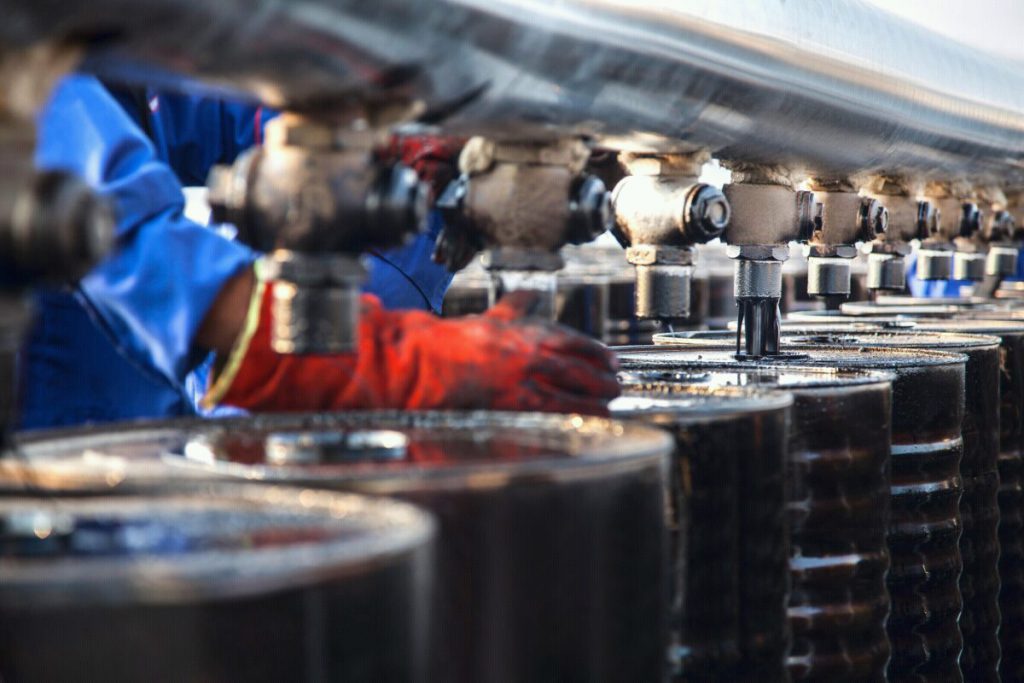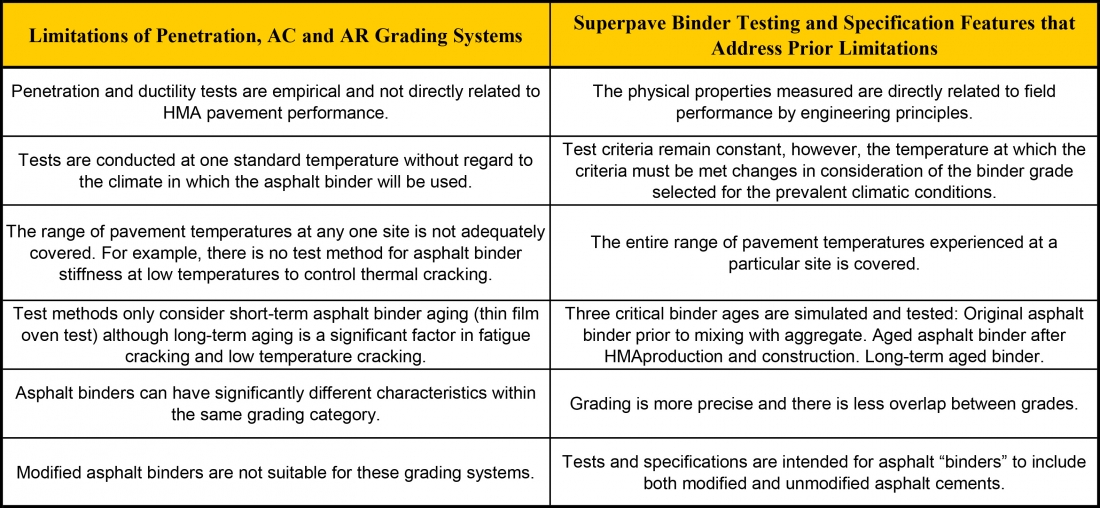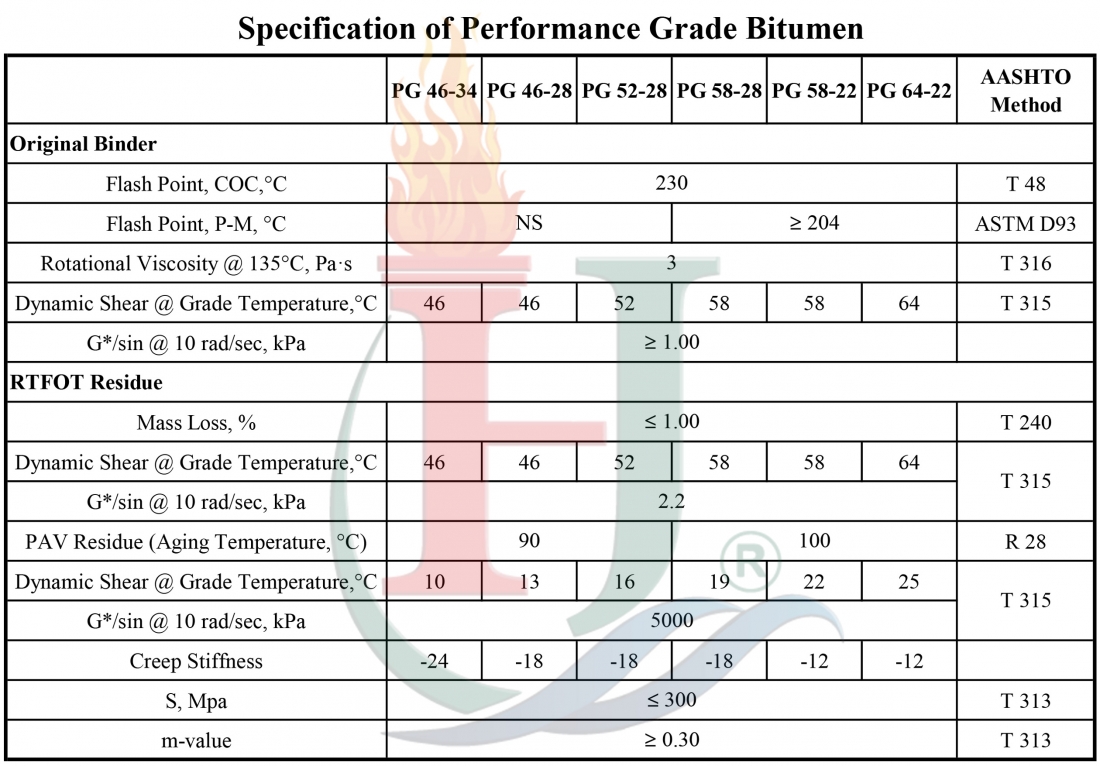Definition Of Performance Grade Bitumen
Performance Grade (PG) bitumen is bitumen which is graded based on its performance at different temperatures. The Long-Term Pavement Performance (LTPP) has given certain algorithm to calculate the temperature of the pavement based on the temperature of the air above. From this , the highest and the lowest temperatures of the pavement is calculated and the bitumen that performs well in that temperature range is selected.
Penetration grading and viscosity grading are somewhat limited in their ability to fully characterize asphalt binder for use in Hot Mix Asphalt (HMA) pavement. Therefore, as part of the Superpave research effort new binder tests and specifications were developed to more accurately and fully characterize asphalt binders for use in HMA pavements. These tests and specifications are specifically designed to address HMA pavement performance parameters such as rutting, fatigue cracking and thermal cracking.

Superpave performance grading (Performance Grade) is based on the idea that an HMA asphalt binder's properties should be related to the conditions under which it is used. For asphalt binders, this involves expected climatic conditions as well as aging considerations. Therefore, the PG system uses a common battery of tests (as the older penetration and viscosity grading systems do) but specifies that a particular asphalt binder must pass these tests at specific temperatures that are dependant upon the specific climatic conditions in the area of use. This concept is not new – Selection of penetration or viscosity graded asphalt binders follows the same logic – but the relationships between asphalt binder properties and conditions of use are more complete and more precise with the Superpave PG system.Information on how to select a PG asphalt binder for a specific condition is contained in Superpave mix design method. Table below shows how the Superpave PG system addresses specific penetration, AC and AR grading system general limitations.

How to read a Performance Grade?
The PG grading system is based on climate, so the grade notation consists of two portions: high and low pavement service temperature. The major concern for high temperature performance is rutting, which typically takes time to cumulate, therefore an average of 7 day maximum pavement temperature is used for describing the high temperature climate. On the low temperature side, thermal cracking can happen during one really cold night; therefore the minimum pavement temperature is used for describing the low temperature climate. For both high and low temperature grade, PG grades are graded in 6 ° C increment. The average 7 day maximum pavement temperature typically ranged from 46 to 82 ° C, and minimum pavement temperature typically ranged from −46 ° C to −10 ° C.
A binder identified as PG 64-10 must meet performance criteria at an average 7 day maximum pavement temperature of 64 ° C and also at a minimum pavement temperature of −10 ° C. Please note that maximum pavement temperature is typically higher than the air temperature by about 20 ° C since the dark color pavement absorbs the heat and retains it. The maximum pavement temperature is typically measured at about 1 inch below the pavement surface. However, the minimum pavement temperature occurs on the surface of the pavement and is equal to the air temperature.
The common minimum reliability used is 98%, so that means when the PG 64-10 binder is selected, the asphalt binder in the AC pavement should perform satisfactorily under normal traffic condition at the location where the extreme pavement temperature are within the range of − 10 ° C and 64 ° C throughout its service life with a minimum 98% confidence level. Where the traffic condition is not typical, such as the really heavy traffic like interstate highway, or slow traffic such as bus stop or intersection area, one or two grades stiffer asphalt binder may be used to help prevent the rutting problem.
Polymer modified binders are used wherever extra performance and durability are desired. Improvement in resistance to rutting, thermal cracking, fatigue damage, stripping, and temperature susceptibility have led polymer modified binders to be substituted for asphalt in many paving and maintenance applications. Especially when good rutting resistance for high temperature and good thermal cracking resistance for low temperature are concurrently required in the same application, the polymer modification is generally required.
rule of thumb to differentiate the polymer modified binder from unmodified binder is to add both low and high temperature grades together, if the sum is greater than 90, it is likely to be a polymer modified binder. For example, a Performance Grade bitumen 76- 22 is likely to be a polymer modified binder since the sum is 98, while a Performance Grade Bitumen 64-10 is likely to be an unmodified since the sum is 74.










